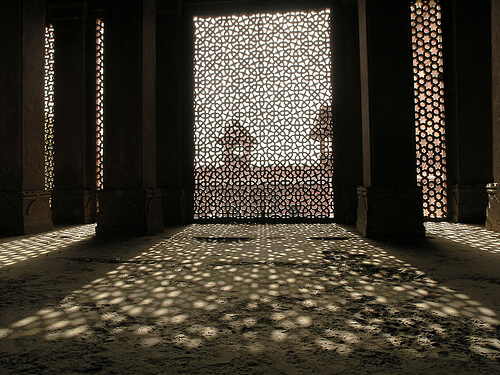One week ago my colleague Anja spoke about temperature regulation in plants and animals. Temperature regulation in plants and animals. I would like to follow up on that topic and relate how technical implementations of some of those principles could look like. Heating and cooling systems are quite prominent these days. We humans have conquered both extreme hot and cold climates. The Dubai’s indoor ski resort boasts of 22,000 square meters of space cooled to -6°Cor heating of labs in Antarctica where temperatures stay in excess of -20°C. The question is not, if we are capable of doing better (more heating, more equipment and more energy), but if we can do it as smart as nature does it. Nature does not rely on one mechanism to regulate temperature, but it employs a combination of multiple mechanisms to do it. If we could adapt a few of these methods in our living, we could achieve both smart and energy efficient temperature regulation.
I will discuss the possible implementaions for the principles shown in the pervious article.
Insulation and surface morphology:
Insulation is a well-researched topic. We have many different types of insulation materials available on the market. A combined system of a good insulation system and surface morphology could be employed in buildings. Similar to plants changing their morphology to get the most out of solar energy. Based on the sun’s location during winter, solar collectors inspired from polar bear could be installed[1]. A system in which light is trapped by numerous fibers and then kept there by an underlying black layer to reflect the light back. The mechanism is shown in figure 1

Figure 1: Polar bear skin.
In simple words polar bear hair absorb light and direct it to the tip of the hair. The hair is hollow like optic fiber and the light rays which are not absorbed are reflected and absorbed again by surrounding hair. Such a system can absorb light and keep a house warm given minimal deposition of snow. The other faces of the house could be optimized for summer where the hot air could be cooled down using evaporative cooling. However does the solution demand for a new building incorporating all these features? The answer is not necessarily. I will give you a simple example of a system that I am trying to make for my own balcony window/door. Last summer my balcony was hot as hell due to the direct sunlight. When I moved my plants outside on the balcony I felt that it was relatively cooler, especially just when I watered my plants. This persuaded me to make a curtain using plants and grass which had water dripping on it. This cooled down the hot air entering from the balcony. I hope this summer I will have a cooler temperature in my flat 🙂
Body shapes:
Animals use unique strategies for keeping their bodies cool. Some radiate heat through ears and some have a thinner fur on the head to use natural convection to keep their brain from cooking. This principle is quite extensively used in automobiles to keep the engine block from overheating and also in the radiators we use for heating. But a similar system could also be used for buildings using just air as a medium. If we place an air duct where there is a decent wind flow, the hot air from inside can be circulated through the duct cooling it down by a few degrees. You don’t think this would work? It’s the same principle which makes us feel less warm while standing in the shade of a tree. The shadow from the tree stops from direct sun light reaching you and the natural wind flow takes heat away from your body (though the difference is too small in case of a very hot climate). The effect is more efficient when you have water on the surface. The same principle is currently being researched to implement into solar cells. Providing corrugated edges makes natural convection more efficient due increased surface area[2]. Figure below shows the thermographic image of a plant on my balcony and it can be clearly seen that the edges have a cooler temperature.

Behavioral strategies and micro climate
One of the most common behavioural strategies used in nature is huddling. Animals like penguins stay close to each other in order to stay warm. This principle can be seen in old Indian buildings (And most probably in other countries to0). The houses are constructed in a way such that the living areas are away from direct light.

Jali(Hindi word for mesh). Jali lets in diffused light and wind.

Haveli (Mansion in hindi). Central space for light and air circulation.
There is an open space in the center to facilitate air circulation and this combined with sleeping rooms being away from direct sun facilitates a relatively cooler temperature. The same can be done in cold climatic conditions by placing the heat source centrally. Such concepts are already being implemented in desert areas. The buildings are clustered into close blocks disabling the hot desert air to penetrate the inner parts of the cluster. This is combined with extended sun roofs for blocking direct sun into the streets. The above mentioned scenarios are a good example for micro-climates. This is similar to what plants do, clustering in groups facilitates a surrounding microclimate.
I have tried to describe how natures techniques could be adapted into our lifes. If you are intrested to know about any of them in detail or you have an idea of your own, feel free to share with us 🙂
References
- Buchberg, H., Ivan Catton, and D. K. Edwards. „Natural convection in enclosed spaces—a review of application to solar energy collection.“ Journal of Heat Transfer 98.2 (1976): 182-188.
- Tonui, J. K., and Y. Tripanagnostopoulos. „Improved PV/T solar collectors with heat extraction by forced or natural air circulation.“ Renewable energy32.4 (2007): 623-637.
- figure 1: http://cargocollective.com/awoodhouse/BIG-WHITE-BEAR
- Jali figure: http://nickyskye.blogspot.co.at/2012/07/pietra-dura-parchin-kari-jali-and-taj.html
- Haveli figure: (2016). Incredibleindiaphotogallery.com. Retrieved 13 April 2016, from http://incredibleindiaphotogallery.com/wp-content/uploads/2010/07/Grand-Haveli-Resort2.jpg



